Your body can be exposed to hundreds of different toxins each day as a result of the type of lifestyle you live.
It stands to reason, therefore, that the unhealthier your lifestyle is, the more toxins you will be exposed to and so the sicker you will become as a result of those toxins.
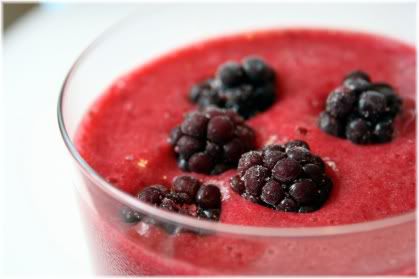
The good news, however, is that the body is designed to deal with toxins because it has built-in detoxification systems that naturally allow it to detoxify itself.
But although the body does a remarkable job at keeping itself healthy, eventually, things can start to get too much for it if it becomes overloaded with toxins.
Over time, continual exposure to toxins can reduce your energy levels, impair your ability to think and concentrate, weaken your immune system, and make you more vulnerable to suffering from diseases and infections.
This is why many people are now turning to detox programs in order to help their body become healthier than it currently is.

Detox programs can involve either stopping certain chemicals from entering your body, such as by making changes to your diet or lifestyle, or by taking steps to remove toxins from your body, such as by going on a detox diet or by using detoxification products.
In this article, we shall explore the many ways this can be done, in addition to providing some helpful tips and advice on what you can expect to happen once you start detoxing.
Time Based & Targeted Detoxes
There are two main ways in which you can detox your body. You can do so either on the basis of time, or by targeting a specific concern that you have. Let’s have a look at each of these two forms of detox now:
1) Time Based Detoxes
Time based detoxes are done with the intention of making the whole body healthier, but do not specify what part of the body is going to be detoxed or what toxins are going to be removed.

Such detoxes can be done on a short-term basis, such as for one to seven days, or on a long-term basis, such as for one to three months.
Most time based detoxification programs involve altering your diet. For example, consuming only liquid vegetable or fruit juice for a certain number of days, or by excluding certain food groups from your diet such as dairy or wheat based products.
2) Targeted Detox Programs
A targeted detox is done with the intention of detoxing a specific part of the body such as the liver, kidneys or digestive system, or by detoxing the body of specific types of toxins such as heavy metals like aluminum, mercury or lead.
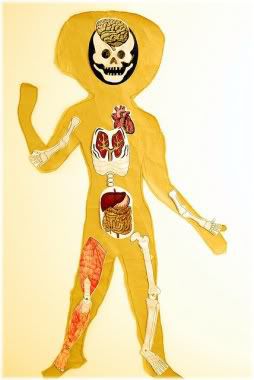
These types of programs are generally carried out by people who have performed a time based detox, and now what to further improve their health by focusing their efforts in one area.
But they can also be done by people who already know what they want to detox because of a specific health complaint or concern which they have.
It’s important to note though, that time based and targeted detox programs can, and often are, done together.
But this is generally only recommended for more experienced people who are already in a reasonable level of health as detoxing too much, too soon, can be dangerous.
Main Sources of Toxins
Unfortunately, it’s not possible to get rid of all the toxins in your body for good, and this is true no matter what detoxification program you follow.
The reason for this is simple.
The environment in which we all live simply does not allow for a person to remain entirely toxin free. As a result, no matter how much you cleanse your body, there will always be other toxins that will make their way inside of you.

But this isn’t something that you should worry about, because as we said earlier, the body is designed to deal with toxins via its inbuilt detoxification systems.
You should, however, be concerned when you are exposed to so many toxins that the body struggles to cleanse itself of them, because this is when you will start to suffer from reduced levels of health and an increased risk of illness and disease.
The best way to minimize your toxin exposure, and therefore, the effects that those toxins have on you, is to be aware of the main sources of toxins. So let’s have a look at some of these sources now:
Food
A major source of toxins comes from the foods you eat on a daily basis. However, the amount of toxins you consume will largely depend on the types of foods you eat.

If, for example, you eat lots of junk foods which are highly processed or contain artificial ingredients (e.g., artificial sweeteners), then you are likely to receive a considerable amount of toxins which your body will then have to process and live with.
On the other hand, if you mainly eat fresh organic foods, then your toxin intake will be greatly reduced. It will not, however, be completely eliminated because even organic foods are not toxin free.
Most organic fruits and vegetables, unless you grow them yourself, will contain toxins from the chemicals that are used to grow them. Organic does not mean chemical free, it just means that less chemicals are used during the production process.
For foods that are completely organic, such as those grown in your own garden, natural toxins can still be present in those foods.
This is because all plants have evolved to produce toxins to protect them from predators, but generally, these don’t cause humans any issues unless you have a specific intolerance or allergy to them.
So regardless of the type of food you eat, you will always be putting some toxins into your body and there is very little that you can do to prevent this.
You can, however, greatly minimize the amount of toxins you consume by being very selective over what foods you choose to eat.
Water

The water you drink can expose you to numerous harmful toxins. This occurs as a result of chemicals, such as chlorine or fluoride, that have been added to the water to control bacterial outbreaks or to prevent tooth decay.
Other substances, such as a birth control medication or prescription drugs which have been flushed down the toilet, can also contaminate the water supply because water treatment plants are not designed to remove such contaminants.
Water can also be contaminated as a result of chemicals leaching into it. For example, lead pipes which were once used to carry water to homes leached lead into that water, a known heavy metal which can result in neurological disorders.
Today, however, the greatest source of water contamination occurs as a result of plastics, in particular, plastic water bottles. Some forms of plastic, for example, leach bisphenol A which some scientists have linked to reproductive and fertility disorders.
You can tell whether a plastic is safe or not by looking at the number it has printed on it.
Generally speaking, when dealing with unsafe plastics, toxic substances are most likely to leach into the contents of the bottle or container when that plastic is heated, exposed to sunlight for a prolonged period of time, or if it contains an acidic beverage (e.g., coke).
The charts below show a list of the different types of plastics and the safety concerns associated with each:


To make matters worse, a lot of the chemicals found in our water supply can turn into a gas when they are heated, such as when you are having a shower, and then breathed directly into the lungs before being absorbed into the blood.
So if you are trying to fully detox your body, it’s strongly recommended that you invest in a good water filter, such as a Black Berkey, avoid buying bottle water, and also install a shower filter.
Air
Another major source of toxin intake is from the air which you continually breathe each day. This is largely a byproduct of our modern-day society which has resulted in numerous toxic chemicals being released into the atmosphere as pollution.
But just like with food, the amount of toxins that a person is exposed to from the air can vary considerably.

If you live in a city, for example, then you are likely to be exposed to many more chemicals than if you lived in the suburbs where there are fewer cars and fewer factories.
Pollution can also occur indoors as a result of the chemicals you use to clean your home, and also from the chemicals you use on yourself such as hairspray and deodorant.
In fact, some studies have found that indoor air quality is actually worse than the quality of the air outside! But this tends to apply mainly to those who use lots of chemical products, and also to those who do not ventilate their home regularly.
Unfortunately, there is little you can do to minimize your toxin exposure outside the home, except for wearing a face mask like some people do in China or Japan where pollution levels are very high. But there are things that you can do to minimize your toxin exposure inside the home.
Avoiding or limiting the use of chemical sprays can be a big help, and if you do use them, ensuring that you do so near an extractor fan or an open window.
The same applies to chemical liquid products such as floor or surface cleaners. As if you can smell a product, it’s basically the same as eating it, only in smaller quantities!
To further improve your indoor air quality you could invest in an air filter to purify your air. Alternatively, you can keep live plants, such as Aloe vera, in your home as these will act like a natural air filter.
Lifestyle
Your lifestyle largely determines how many toxins you accumulate and how well your body is able to detox them.
For example, if you smoke or take medication on a daily basis, then you are putting toxins into your body which could very well end up causing you health problems later on.

Furthermore, if you spend most of the day sitting down and don’t get much exercise, then your ability to expel toxins will further be impaired.
This is because your lymphatic system, which is one of the body’s natural detoxification mechanisms, relies entirely upon movement for it to operate.
Related to your level of physical activity is the amount of body fat you have. This is important because fat can store toxins, so if you are overweight, your health will continually be affected by fat soluble toxins until you are able to shed your excess weight.

Another thing worth considering, although not a true toxin in the sense of it being a chemical, is electromagnetic radiation (EM radiation or EMR).
All electronic devices emit radiation, and there are concerns, for example, that radiation emitted by cell phones and wireless routers could have very harmful effects on the body.
Overall, the best thing that you can do to improve your lifestyle is to exercise more and to eat better quality foods.
Avoiding junk foods will limit the amount of harmful substances that your body has to deal with, whilst exercising will cause you to sweat and stimulate the lymphatic system so that your body can naturally detoxify itself more effectively.
Cosmetics
Cosmetics include anything you put on your body to clean it, make it smell better, or make it look better.
Whilst cosmetics certainly are very helpful, they can also be a major source of toxins, such as parabens or aluminium, due to the numerous man-made chemicals which they contain.

There are two main approaches that you can take to reduce your level of toxin exposure from cosmetics.
The first, is to use products which contain as few ingredients as possible or only contain natural ingredients.
Generally speaking, the fewer ingredients that a product contains, or the more natural ingredients it contains, the less toxins you will be exposed to through its use.
The second way you can reduce your toxin exposure is by using natural equivalents of commercial cosmetic products.
For example, rather than using an artificial face cream, you could use a natural oil such as emu oil or coconut oil. Rather than using an artificial spray deodorant, you could use a rock salt deodorant instead.
The more artificial products that you can replace with natural products the lower your level of toxin exposure will be.
What Health Effects do Toxins Cause?
A toxin is a poisonous substance that is produced by a cell or living organism. Most people, however, will use the term “toxin” to describe anything that is poisonous or harmful whether it be a man-made or artificial substance.

Toxins can have many different effects on the body. Some of these effects appear immediately and are short-lived, whilst others need to accumulate to a certain level before they start to cause any noticeable effects.
Below are some of the various symptoms which can occur when you are exposed to a toxin:
• Headaches
• Impaired concentration
• Blurred vision
• Weight gain
• Mood swings
• Depression
• Impaired immune function
• Greater susceptibility to disease
• Greater susceptibility to infection
• Dull skin
• Digestive disorders
• Decreased energy levels
• Disrupted sleep patterns
• Anxiety
These are just some of the health effects that toxins can cause. In most cases, these symptoms are caused by man-made chemical toxins, although, there are also natural toxins which can cause the same or similar symptoms.
Natural Toxins
Toxin | Main Sources | Main Effects |
| Aflatoxin | Rice & peanuts | Cancer |
| Ergot | Rye & related grains | Hallucinations, convulsions, death |
| Goitrogens | Soybeans, peanuts, spinach and many vegetables | Interferes with thyroid gland functioning |
| Hydrazine | Shiitake and white button mushrooms | Cancer |
| Lectins | Nightshade members (e.g., pepper, tomato, eggplant, potato), grains (e.g., corn, rice, barley) and legumes (dried beans, peanuts) | Intestinal, liver, kidney and heart damage |
| Ricin | Castor bean | Death |
| Phytate/Phytic acid | Grains, nuts & seeds | Acts as anti-nutrient by inhibiting absorption of minerals such as calcium, magnesium and zinc |
| Psoralen | Parsnips, celery & parsley | Premature skin aging, increased skin cancer risk |
| Solanine | Green parts of unripe potato | Gastrointestinal and neurological disorders |
| Trypsin inhibitors | Soybeans, raw egg whites & lima beans | Interfere with protein digestion & metabolism |
| Chlorine | Water – drinking & showering | Reduced immune function & cancer |
| Mercury | Dental fillings, tuna, swordfish | Neurological disorders, depression |
| Aluminium | Soda cans, water, antiperspirant deodorants | neurological disorders, cancer |
Man Made/Synthetic Toxins
Toxin | Main Sources | Main Effects |
| Artificial sweeteners | Aspartame (NutraSweet), Sucralose (Splenda), Saccharin (Sweet n Low) & Acesulfame Potassium (Sunett): low sugar/diet foods | Vision problems, neurological disorders, increased cancer risk |
| Monosodium glutamate (MSG) | Potato chips, yoghurt, restaurant foods | Brain damage, hyperactivity, Parkinson’s & Alzheimer’s disease |
| Bisphenol A (BPA) | Plastic water bottle, lining inside cans, baby bottles | Reproductive & fertility disorders, gender confusion & increased breast cancer risk |
| Parabens | Cosmetic products – shampoo, makeup, deodorants, moisturizers | Increased skin aging (methylparaben), increased breast cancer risk, reduced sperm count |
| Fluoride | Toothpaste, water & vegetables | Dental fluorosis, decreased bone density, neurological disorders, cancer |
| Hydrogenated Fat/Trans Fats | Potato chips, margarine, cookies | Cardiovascular & autoimmune diseases & cancer |
| Sodium Nitrate | Processed meats | Colon cancer |
| Recombinant bovine growth hormone | Cow milk | Breast cancer, autoimmune disorders |
| Teflon | Non-stick frying pans | Cancer, heart disease, birth defects & death |
If you have led a relatively unhealthy lifestyle, then when you first start to detox you are likely to have a difficult and unpleasant experience.
The reason for this is because when you stop putting certain toxins into your body, or remove them from your body, you will undergo a period of withdrawal which then causes symptoms that are typically associated with detoxification.
Some of these detox symptoms include:
• Headaches
• Feeling weak
• Feeling tired
• Feeling irritable
• Blurred vision
• Inability to concentrate
• Depression
• Cravings
• White coating on tongue/teeth
• Constipation
• Brain fog
• Metallic tastes in mouth
• Stomach pains
• Anxiety
• Insomnia
• Changes to skin (e.g., increased sebum, acne)
• Respiratory problems
• Gas
As you may have noticed, some of these detox symptoms are exactly the same as the symptoms that toxins can cause! There are two main reasons why this is the case.
The first, is that during a detoxification program your body will release stored toxins. This means that you are going to experience those same symptoms again until those toxins have been removed.
The second reason is because over time your body becomes “used” to certain toxins, and when it no longer has a toxin which it has become accustomed to, it will start to crave that toxin and produce withdrawal symptoms as a result of its absence.

The best example to demonstrate this point is smoking. Anyone who has tried smoking knows that the first time they smoked it tasted horrible, and that they had to continue smoking for weeks, or even months, before they started to “enjoy” it.
If a person has been smoking for many years, and then suddenly quits smoking, that person can feel weak, irritable and crave a cigarette, even though cigarettes are filled with hundreds of toxins!

The process of withdrawal is why detoxification can be so difficult to do, because the more toxins your body has been exposed to, and the longer it has been exposed to those toxins, the more severe your detoxification symptoms are likely to be.
The good news, however, is that physical withdrawal symptoms usually only last for a relatively short period of time.
So most people undergoing detoxification should be over the worst of their symptoms after a maximum of one, or possibly two, weeks.
The Importance of Keeping a Journal
Anyone who is intending to do a detox for more than one day, or plans to do more detoxes in the future, should ideally be keeping a detox journal in order to help them record their symptoms and experiences.

Keeping a journal can be extremely useful if you are going on a long detox, such as one or two weeks, as it will allow you to record the symptoms you have experienced so far and also help to motivate you to complete your detox program in full.
A journal can also be very useful if you intend to continue detoxing on a regular basis, as with a journal, you can reflect back on your past experiences and remind yourself of what can happen so that you can better prepare yourself for it.
What to Write in Your Journal
You can use anything you like for your detox journal. So whether it’s a piece of paper, a notebook, or even your computer, just use something that you can record your thoughts with and keep safe for future reference.
The first thing you should write in your journal is the type of detox program that you are going on.
This will include whether you are doing a whole body or targeted detox, your reasons for wanting to detox, and what you are going to use to assist your detoxification efforts.

As you progress through your detox, write down any symptoms that you are experiencing, both physical and mental.
Writing your symptoms down at the time you are experiencing them will help to remind you that your body is going through a detoxification process, which will then help to make those symptoms easier to deal with.
This is especially true if you have never done a detox before, because novices often get put off or worried by the symptoms they are experiencing which can then cause them to end their detox prematurely and never go on another detox again.
Finally, at the end of your detox, try to summarize your overall experience in a few sentences.
In the future, you can then look at that summary as a quick reference to remind you of what happened on a particular detox session, such as what worked well for you and what didn’t work so well.
Detoxing Safely
In general, body cleanses or detoxes are considered to be very safe for healthy individuals. There are, however, some guidelines that you should follow to ensure your safety:
1) Start Slow
When you detox, toxins get released into the body and can cause a whole host of unpleasant symptoms as previously discussed. The body then has to process these toxins so that they can be removed, but there is a limit to how much it can process at any one time.

If you release more toxins into the body than it can deal with, you may actually end up causing yourself more harm than good. So to prevent this from happening, start slowly and take your current and past lifestyle into consideration.
If you have lived a very unhealthy lifestyle, for example, you may want to try doing a one or two day juice fast. This will benefit your body tremendously, whilst also allowing for you to become familiar with the detoxification process.
If you are already quite healthy, and have detoxed before, try a two week fast. For the adventurous and committed amongst you, consider juice fasting for one to three months for optimal health benefits.
2) Get Medical Approval
If you are suffering from a pre-existing medical condition such as diabetes or heart disease, then it’s strongly recommended that you talk with your doctor about your intention to go on a detox.
This is important because your doctor will be able to tell you if what you’re thinking of doing is actually safe for you to do.

In addition, if you are going on an extended detox program, such as two or three months, then meeting up with your doctor will allow them to monitor your progress, such as record any changes to your weight, heart function and blood pressure, and then adjust any medication which you may be taking in accordance with those changes.
Many people, for example, find that when they complete an extended detox they no longer require their medication or require much less of it than they once did.
Without a doctor to monitor your progress, you could inadvertently do yourself harm if you keep on taking medication which you no longer need.
3) Pause for Pregnancy

It’s not a good idea for pregnant women to detox as this may harm the developing fetus. You can, however, detox before you get pregnant and eat healthy foods while you are pregnant.
Natural Ways to Cleanse Your Body
Below you will find listed some of the many natural ways that you can cleanse your body and obtain better health:
Fiber
Since many of the toxins that you are exposed to will come from your diet, if you can speed up the rate that food passes through the digestive system, you will reduce the duration of your exposure to toxins which could potentially cause you harm.

For example, slow passage of food through the digestive system has been linked with an increased risk of developing colon cancer.
One way in which you can encourage regular, and more solid bowel movements, is by incorporating fiber into your diet. Fiber can be obtained by eating fruits and vegetables, taken as a supplement, or by eating wheat bran.
Dry Skin Brushing
Your lymph system is a major way in which the body detoxifies itself. The lymphatic system, however, relies upon physical activity to move the lymph fluid under your skin.
So if you are fairly inactive throughout the day, such as because you don’t exercise very often, then your lymph system won’t be very effective at detoxifying your body.

You can help this natural detoxification process by exercising more and/or by dry brushing your skin, which is sometimes called “lymph brushing” or “lymphatic brushing”.
Dry skin brushing involves lightly brushing the surface of your skin to encourage the lymph fluid underneath to move and carry waste products with it.
To dry brush your skin, start on one area of the body, such as your legs, and brush towards your heart. If you don’t have a brush, you can also do this with a towel when you come out of the shower.

In addition to encouraging lymph flow, dry brushing also acts like a mechanical exfoliation by removing dead skin cells from the surface of your skin. This will result in new skin cell regeneration and clearer looking skin with an improved complexion.
Furthermore, because the skin is the largest organ of the body, once it has been properly cleansed it will then be able to more effectively expel toxins via sweating.
Some of the benefits that you may experience from detoxing your skin include:
• Reduced skin congestion so that your skin looks clearer and skin cells turn over faster.
• A reduction in the amount of breakouts and spots.
• Improved immune functioning, which can help to benefit autoimmune skin disorders such as psoriasis, eczema, rosacea and seborrheic dermatitis.
• A reduction in chronic conditions such as yeast overgrowth.
• Improved skin tone giving your skin a much richer color.
• A reduction in the dryness of your skin, which then makes you less susceptible to wrinkles.
• A reduction in the rate at which your skin ages. If your skin is healthy it can detoxify itself, which means that it will suffer from less inflammation which is one of the major causes of aging.
Epsom Salt Bath

Having an Epsom salt bath is a great way to relax and de-stress at the end of the day. It’s also a good way to detoxify the body because Epsom salts (Magnesium Sulfate) soak away toxins that are near the skin’s surface.
If you don’t have Epsom salts, you can use baking soda instead. Baking soda helps to neutralize acids and is also a good remedy for itchy skin.
Rebounding

One of the simplest and most effective ways to detoxify your body, is to buy a rebounder. These small trampolines allow you to jump up and down, and by doing so, encourage the movement of lymph fluid throughout the body.
Rebounding can help to remove toxins, improve your cardiovascular health, and also help to boost your metabolism.
Sweat!

Sweating is one of the ways in which the body naturally detoxifies itself. This can be achieved by taking hot baths, using saunas (ideally a far infrared sauna), or through aerobic exercise.
Once you have worked up a sweat, be sure to shower afterwards to remove any toxins from the skin’s surface.
Apple Cider Vinegar

Apple cider vinegar can be extremely beneficial for those who eat a lot of sugar, because this type of vinegar helps to kill bacteria, such as e.coli, and fungi, such as candida.
Apple cider vinegar can be added to water and drunk as is, or mixed with lemon juice, honey and cayenne pepper to create stronger detoxification effects.
Roll Around

One way to remove toxins from your muscles is to simply roll around on the floor. This helps to remove toxins by acting like a deep muscle massage.
To get the best results, however, a proper deep muscle massage is recommended.
Stretching

Yoga, and other forms of stretching, flush toxins out from your muscles by stimulating deep muscle blood flow. Aim to do stretching exercises at least 2-3 times a week.
Hot/Cold Shower
Having a shower is a great way to detox your entire body, but before you jump in the shower, you should know that this particular type of shower is probably not what you are used to!
The type of shower that can bring detoxification benefits is an alternated hot and cold shower.

Hot water causes your blood vessels to dilate which draws blood nearer to the surface of the skin. Cold water has the opposite effect. It constricts your blood vessels and causes blood to be drawn deeper into the skin.
The alternating effects of hot and cold water have tremendous benefits on your circulatory system, and over time, can be a great way to improve blood circulation throughout the entire body.
The better your blood circulation becomes, the easier it will be for your body to expel toxins and expel them from deeper regions of the body.
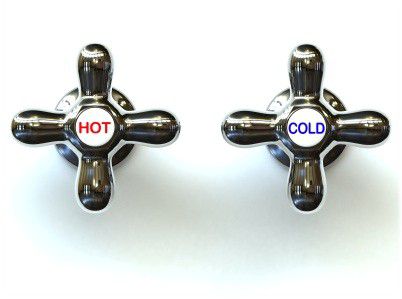
To do a detox shower, start by having a regular warm shower until your body feels warm. Then turn the temperature down as cold as you can.
The first time you do this, it will probably be quite a shock. But after a few hot-cold alternations, you will easily be able to tolerate the cold water and will actually find it very enjoyable!
Note: A detox shower should not be done by people with a heart condition. Also, as stated earlier on, you should install a shower filter to remove chlorine and other contaminants from your bathing water.
Clay Mask

Using a clay mask once a week, as part of your regular skin care routine, is a very effective way to remove toxins because as the clay dries it will absorb toxins into it. The less toxins you have in your skin, the better it will look.
Hot Towel Treatment

Place a warm, wet towel over your face for 5 to 10 minutes to open up the pores in your skin and make your face sweat. Afterwards, wash your face to remove the toxins that came up in the sweat.
Facial Treatment

Having a facial done by a professional is an excellent way to detoxify facial skin. If you can afford it, try to get a professional facial 3-4 times a year.
Water

Drinking water can help to flush toxins out of the body. This is especially important if you are undergoing a detox, as water can help to reduce the severity and duration of any detoxification symptoms you may be experiencing such as headaches.
Detoxing Herbs
Below are listed some herbs that can be used to detox the body:
Psyllium Husks

Psyllium seeds or husks are used primarily for colon cleansing. They expand when consumed with water, and will sweep the insides of your intestines removing excess fecal matter.
In addition, psyllium husks can also help to absorb toxins from the bowels as they pass through.
Psyllium husks can be an effective and inexpensive way to cleanse your colon. They might not, however, be suitable for people who suffer from constipation as they can make constipation worse due to the already narrowed size of the intestines.
Cascara Sagrada

Cascara Sagrada is a laxative that stimulates bowel movements. As such, it tends to be used with other colon cleansing products such as psyllium seeds.
However, whilst laxatives certainly can be useful when used occasionally, they should not be overused because they may cause problems controlling bowel movements if used on a continuous basis.
Milk Thistle

Milk thistle is a popular herb for detoxing the liver, and some studies show that it actually helps liver cells to regenerate more quickly after suffering damage, such as through alcohol abuse.
In most cases, no side effects are experienced from taking milk thistle, although some people report diarrhoea or loose stools.
Nettles

Nettles are a diuretic, which means that they draw water out of the body. This can be useful to increase urine secretion, which itself is beneficial for cleansing the urinary system.
Because of the diuretic properties of nettles, it’s generally not recommended to consume too many nettles for a prolonged period as this may lead to dehydration if you do not drink enough water.
Nettles are usually made as a herbal tea and drunk.
Burdock Root

Burdock root has a similar mode of action to nettles in the sense that it acts as a diuretic.
However, it tends to offer stronger detoxification benefits of the bladder and urinary tract, and is also reported to help assist the removal of heavy metals from the body.
Coriander/Cilantro

One of the best natural herbs for detoxing heavy metals is coriander or cilantro leaf. Coriander chelates (removes) metals, such as aluminium and mercury, thereby allowing the body to excrete them in the feces or urine.
The effects of a coriander detox are further strengthened when combined with garlic or chlorella, as both of these can bind to the released toxins and assist with their removal.
Dandelion Root

Dandelion is something which many people regard as a weed. However, dandelion has many uses. For example, its leaves can be used in salads and its roots and leaves can be made into a tea.
Dandelion helps to detox the gall bladder, kidneys, and purify the blood.
Turmeric

Turmeric is perhaps one of the most beneficial herbs that you could ever take.
It has numerous health benefits, one of which is supporting the natural detoxification systems of the body thus making it more effective and better able to deal with and expel toxins.
Turmeric can be added to food, although if you plan on taking it everyday, it’s best to mix some turmeric powder with boiling water, allow to cool, and then drink it.
To enhance the bioavailability of turmeric, combine it with black pepper and drink your turmeric after you have eaten some fat, such as after a meal.
Alternatively, you can take a turmeric (curcumin) capsule with your largest meal.
Wheatgrass

Wheatgrass contains chlorophyll which can detox the blood and liver. These benefits can be obtained by juicing wheatgress, and for best results, it’s recommended that a cold-press mechanical juicer be used to preserve the live enzymes in the juice.
If consuming wheatgrass juice as part of your detox program, you may want to consider mixing it with fruit or vegetable juices because wheatgrass doesn’t taste very nice on its own.
Fennel

Fennel seeds relax the muscles in the intestinal tract. It can therefore be used alongside other laxatives to allow for easy and frequent bowel movements.
Fennel seeds, when consumed as a tea, also act as a natural diuretic and so can be useful for cleansing the kidneys.
Black Walnut Hull

Black walnut hull is often found in parasite cleanse formulations because of its antifungal and antiparasitic properties.
Cayenne Pepper

Cayenne pepper is a moderately hot spice. It increases blood circulation and has anti-fungal and anti-parasitic properties. It can be added to food or consumed with tea or water.
Cases have been reported of people using cayenne pepper to stop a heart attack.
Specific Detox Programs
Below we discuss some of the most popular and well-known detox programs:
Fasting
Fasting involves not eating any food for a certain period of time, and is something that is practiced by various religions throughout the world.
By not eating food, your body can use the considerable energy it normally devotes to the digestion of food to other things such as healing and detoxification.

However, although fasting without food can be an extremely powerful way to detox your body, it’s not something that’s recommended for novice detoxers or for people who have an existing health problem.
This is because fasting can produce very powerful detoxification symptoms, and some people may not physically be able to cope with the toxins that are released.
If you want to go on a fast, but haven’t fasted before, try going on a one day fast and gradually increase the length of your fast in subsequent detox sessions.
Depending on how toxic your body is, fasting is likely to make you feel very tired, give you mood swings, cause cravings, and give you headaches.
For this reason, you should only fast if you are able to remain at home and do not have any other commitments during the duration of your fast, such as having to go to work.
In addition to cleansing your body, fasting can also be a useful way to identify food intolerance, which is a term used to describe foods that react badly with your genetic makeup.
Fasting can be useful in identifying food intolerance, because when you break your fast, and then gradually reintroduce different foods into your diet, you can quickly spot symptoms caused by eating a particular food.
For example, skin rashes/breakouts, reduced mental clarity, headaches or psychological symptoms such as depression can also be caused by eating intolerant foods.

Furthermore, recent research has shown that intermittent fasting, which involves not eating anything for one or two days a week, can accelerate weight loss and reduce levels of insulin like growth factor (IGF-1) in the blood. High levels of IGF-1 have been associated with an increased risk of heart disease and diabetes.
The strictest form of fasting involves consuming only water during the duration of your fast. Another type of fasting, juice fasting, will be discussed next.
Juice Fasting
Juice fasting is like regular fasting except that you are allowed to drink fruit or vegetable juices in addition to water and herbal teas.
If you have never fasted before, juice fasting is a good type of fast to begin with as it produces less severe detox symptoms than a regular fast, but still provides many of the same health benefits.

In order to start juice fasting, you need a juicer and a supply of fruits and vegetables to last you throughout the duration of your fast.
It’s recommended to use a cold press juicer to get the most benefit from your juice, however, as cold pressed juices retain the most nutrients and live enzymes.
Vegetable juicing tends to be better than fruit juicing as vegetables are naturally low in sugar, unlike fruit, which can cause candida overgrowth and eroded tooth enamel if you drink too much.
The best vegetables to juice for detoxification are green vegetables such as cucumber, kale and broccoli. If you grow sprouts, you can also juice them such as broccoli sprouts and alfalfa sprouts.
During a juice fast, you will have more energy than you would with a normal water fast, but you are still likely to feel weak and experience strong detoxification symptoms during the first few days of your fast.
Generally, days 1-3 tend to be the hardest, but once you get to days 4-5, you should find it quite easy to continue your fast without craving food.
All forms of fasting are an excellent way to lose weight, which itself is a good way to detox the body. This is because some chemicals and toxins can be stored in body fat, and unless you get rid of that fat, those toxins will continue to affect you.
To see some of the remarkable benefits that juice fasting can bring, I recommend watching the movie “Fat Sick and Nearly Dead“.
The Fruit Diet
This detox diet plan is like a light fast. It involves not eating any food for a period of time except for a different fruit for breakfast, lunch and dinner. For example, at breakfast you eat two apples, at lunch a banana, and for dinner, two oranges.
Following this type of detox diet will give you many of the benefits that fasting would, but you won’t feel as weak because you are getting more energy from consuming a whole food.
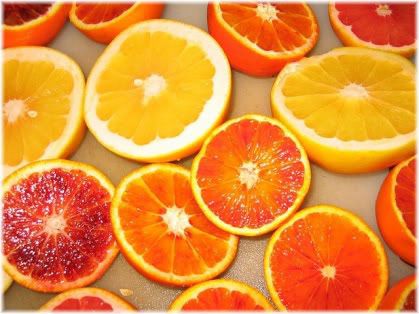
Also, because you are not eating very much, your body won’t have to devote so much energy to the digestion of food. As a result, your body will be able to use that energy for healing and detoxification.
How much fruit should you eat? The idea is not to eat too much, as this detox diet is basically another type of fasting. Try eating one or two pieces of fruit for each meal and see how you feel. If necessary, increase that amount to something which you are comfortable with.
If you have never gone on a detox diet before, try carrying out this program for 3 or 7 days. For more experienced people who have tried fasting before, you can extend this to two weeks or longer if you feel able to do so.
Vegetable Soup
To add some variety to your detox diet, try making freshly prepared vegetable soup for lunch or dinner.

To make a detox soup, add avocado, red onions, bell pepper, broccoli, cucumber and garlic to water and boil for 10-20 minutes. This will create a watery soup that contains the nutrients from your vegetables in an easily absorbable form.
If you want a thicker soup, take these ingredients and put them in a blender. The resulting mixture can then be heated to produce a lovely detoxifying soup.
It’s also a good idea to add some butter or olive oil to your soup, as fat helps you to better absorb the nutrients found in vegetables.
Body Detox Kits
Body detox kits contain a variety of natural ingredients, usually herbs, that are known to help the body detoxify itself by supporting its natural detoxification systems.

One of the main advantages of using detox kits is that because they come pre-prepared, they are extremely simple to use and so are very convenient if you don’t have time to make your own concoctions.
Also, because they are ready-made, you will know that you’re getting the right quantities of the ingredients you need to detoxify yourself. As a result, you can be fairly certain that you will receive detoxification benefits from using such products.
This is especially important if you haven’t detoxed before, as you won’t have to worry about overdosing. This is something that can happen if you try to make your own detox kits and get the quantities of the ingredients wrong.
Oil Pulling

Oil pulling involves sipping a small quantity of oil, such as sunflower oil or coconut oil, and swishing it around in your mouth for 10-20 minutes or until the oil turns to a watery white liquid.
Interestingly, there are several studies which have been done on oil pulling that show it to be effective in reducing the number of bacteria in the mouth, especially between the teeth and underneath the gums, in addition to improving one’s overall oral hygiene.
Salt Water Flush
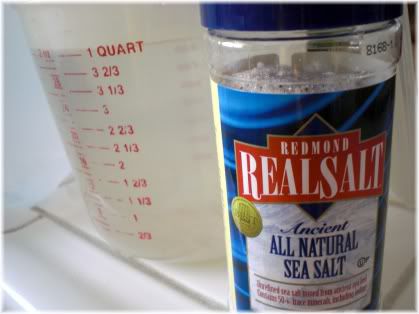
A salt water flush involves adding one or two tablespoons of salt to a large glass of water (1 pint), mixing it until the salt dissolves, and then drinking the water as quickly as possible.
The effect of this concoction is to act like a laxative, and within 30-60 minutes, you will experience a sudden urge to have a bowel movement.
Although effective at cleansing the colon, a salt water flush isn’t the most pleasant type of laxative as the salt water will make you gag and you will probably feel sick after drinking it.
The Master Cleanse
The master cleanse is perhaps one of the most popular detox programs around, largely due to various celebrities, such as Beyoncé, who have given it their seal of approval.

To do a master cleanse, you need to mix freshly squeezed lemon juice (2 tablespoons) into a glass of water with maple syrup (2 tablespoons) and a pinch of cayenne pepper.
Ideally, you should drink 6-12 glasses of this mixture each day for a period of 10 days as a juice fast.
For the full program, it’s also recommended to do a salt water flush in the morning and have a herbal laxative tea, such as peppermint tea, in the evening.
You are likely to experience significant weight loss from this cleanse, but don’t expect it to last, as most people quickly put back on the weight after the fast is over.
Liver Flush
A liver flush, or liver cleanse as it’s sometimes called, is one of the most impressive types of detoxes due to the very visible results it produces.
To do a liver flush, you drink 2-8 oz of olive oil, and 2-8 oz of freshly squeezed lemon juice mixed with 4 tablespoons of epsom salts. You then lie down on your side for 30 minutes and massage your abdomen.

You are likely to experience an urge to go to the toilet shortly after drinking this mixture, but it will take a few hours before you see any actual results.
For this reason, a liver flush is usually done at night before going to bed so that a bowel movement can be achieved in the morning.
Supposedly, a liver flush flushes out gallbladder stones. However, doctors who have examined these “stones” have found them to be made up of bile that has hardened into a stone shape as a result of consuming oil and lemon juice. Doctors also say that it’s not possible to expel gallbladder stones in this way.
As a result, the current medical consensus is that liver flushes are not effective, and whilst they may produce impressive looking results, they do little, if anything, to actually detoxify you.
Bentonite Clay
Bentonite clay is another popular type of detox that produces very impressive looking results. It involves consuming a mixture of bentonite clay with psyllium husks to remove the build-up of mucoid plaque from the walls of the intestine.

When you have a bowel movement, the result can be seen as a very long and rubbery looking excrement.
Most medical professionals, however, believe that this is simply a result of the bentonite clay bonding with the psyllium and the mucous of the intestinal walls. Mucous which is naturally secreted as a lubricant and does not form into a plaque.
Enemas
An enema involves inserting a tube into the anus to flush warm water, or sometimes coffee, into the rectum with the intention of cleansing the colon of fecal matter.
After the liquid has been inserted into the colon, it’s then kept there for as long as possible before excreting it out. Alternatively, this may be done mechanically and professionally via a colonic irrigation device.

Enemas are very effective at cleansing the colon of fecal matter, largely because feces breaks down rapidly when it comes into contact with a warm liquid.
Enemas, however, should only be done once or twice a month at most, because if done too frequently, they can result in a lazy bowel and an inability to control bowel movements.
The Alkaline Diet
As a result of eating unhealthy foods, such as processed and refined foods, the body can become overly acidic. Many health experts now believe that there’s a link between how acidic your body is and the likelihood of you suffering from disease.

Alkalinization of the body can be promoted by eating green vegetables, drinking green vegetable juices, drinking apple cider vinegar and juicing lemons. A similar effect can also be achieved by consuming aluminum-free baking soda.
To check how acidic your body is, purchase some inexpensive pH strips. These will tell you your acidity level, and allow you to judge the effectiveness of any measures you may be taking to alkalinize yourself.
Detox Foot Pads
Detox foot pads are small adhesive pads that can be stuck to the soles of the feet to cover various reflexology and acupuncture points. They are based on principles from the Far Eat, and aim to detoxify the body from the foot.
Although the ingredients of detox food pads can vary, they all tend to contain natural ingredients such as tourmaline and wood vinegar.
Such ingredients are designed to stimulate the withdrawal of toxins through the pores of the skin from the lymph fluid that sits underneath it.

One of the reasons why detox food pads have become so popular is due to their simplicity of use. All you have to do is stick them on the soles of your feet before going to bed, take them off in the morning, and then throw them away.
As detox food pads tend to be relatively inexpensive, they can be used on a continual basis as your primary detoxification method. Alternatively, they can be used to support any ongoing detoxification program that you are following.
Another reason which may help to explain the popularity of detox foot pads, is the very visible results they produce.
Unlike most detoxification methods which don’t show any visible signs of the toxins that have been removed, detox foot pads change from a clean white color to a dark brown and oily color when you take them off.
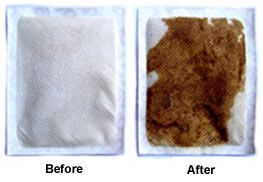
As a result, it appears that when you take your foot pads off that they have removed a lot of junk from the body, and so have been effective at detoxifying you.
But do detox food pads actually work? Or is there some other reason which may explain the supposed benefits that people get from them?
Do Detox Foot Pads Work?
There is a lot of controversy regarding the effectiveness of detox foot pads and whether or not they do indeed detox the body.
The following video provides a good overview of whether or not these foot pads work, and is definitely worth watching if you are considering this means of detoxification.
Some people claim that detox foot pads do not work, and offer no detoxification benefits. They claim that the reason why the foot pads change color, is simply due to the heat and sweat released by the feet reacting with the ingredients in the pads.
However, there are many testimonials from people who have used detox food pads and claimed to have received noticeable results.
Considering the amount of positive feedback there is on the internet from users, this does seem to suggest that the foot pads may actually be doing something.

But there is the possibility that people who report these benefits are merely benefiting from a placebo effect.
They think that the foot pad is going to help them detox, and when they see the color change in the morning, it reinforces their belief that were in fact cleansed of something.
There are also testimonials of people who said that they had their foot pads analyzed in a lab for toxins, and have found things such as heavy metals.
Of course, these metals could have been present in the ingredients the food pads contain to begin with, but these are interesting findings nevertheless.

In addition, people have also reported having their blood sampled before and after using the foot pads, and have noticed a decrease in heavy metals which the foot pads claim to remove.
There are two ways to interpret such findings, if they are true. The first is that the body naturally detoxifies itself, and so the toxins would have been removed anyway. All the pads did was just absorb the toxins that were excreted in the sweat.
There is also the possibility that the person may have been doing other detoxification programs which helped to reduce the levels of heavy metals in their body.
Alternatively, these results came from using the detox foot pads and they actually do work.
Detox Body Wraps
The skin is the body’s largest organ, and as a result, it’s one of the primary routes through which toxins can enter the body. However, it’s also a major route through which toxins can exit the body, which is why many detoxification programs target the skin.
One such skin and body detoxification method is known as a detox body wrap, also sometimes called a “detox wrap” or “body wrap”.
What is a Detox Body Wrap?
A detox body wrap involves two parts to the treatment. The first, is applying a detoxifying mixture to the skin that will absorb toxins released during the treatment. In most cases, this mixture will be made up of some type of clay with added minerals or essential oils.
However, the type of mixture you receive can be virtually anything, ranging from seaweed to aloe vera and even collagen. But if you’re a beginner, it’s usually best to start with the clay mixture as these tend to be especially good for detoxing.

The second part of the treatment involves wrapping you up in bandages. These are applied firmly to the treated areas, and then left for a period of time before they are removed. Typically, treatments last 30-60 minutes.
Not all treatments, however, use a wrap. Some, for example, use infrared heat or steam. So the type of body wrap you get really depends on the type of results you want as they each have different benefits.
Body Wrap Benefits
There are several benefits that one can receive from undergoing a detox body wrap.
The first, and most obvious benefit, is the detoxification of the body. This is achieved by slightly compressing the skin and the underlying fat cells that sit beneath it.
Any toxins within this area will be squeezed up and out of the skin via the skin pores, where they will then be absorbed by the clay or whatever mixture has been applied.

After your body wrap session, detoxification benefits can be enhanced by doing light exercises, such as walking or yoga, for 10-15 minutes to stimulate the circulatory and lymph systems.
If you have a clay treatment, you may also be advised not to shower when you get home. This is because any clay left on your skin will continue to detox you if it’s left on.
The second major benefit of a body detox wrap is that of weight loss, although it’s important to note that you don’t actually lose any weight, you just look like you do.

These apparent weight loss benefits, also called “inch loss”, come as a result of repositioning the fat cells underneath the surface of the skin.
In effect, they are pushed closer together and compacted which then has an influence on the overlying skin.
In addition, the fat cells themselves, and the soft tissues underneath the skin, may become more toned and change shape slightly.
Both of these effects can cause the skin to become tighter, look smoother without irregularities, and create inch loss so that it looks as if you have lost weight.
Do Body Wraps Detoxify the Body?
Many people, including celebrities, use body wraps to enhance the way their body looks or to detoxify it. The fact that body wraps have become so popular is hardly surprising, as they actually do work.
Wrapping of the body can indeed help to stimulate toxin removal from below the skin, and the use of clays, or other mixtures, can help to absorb these toxins and also nourish the skin at the same time.

However, perhaps the main reason why people have body wraps is due to the shaping effect they produce. Body wraps can really help you to lose a few inches, and you will probably notice that your clothes feel looser too.
Most people who have body wraps get them done once every week or every two weeks, and this is probably a good time frame to help maintain the positive results that you get from this treatment.
Limitations
Although having a body wrap can help you to lose inches, this is not a substitute for living a healthy lifestyle.
If you don’t exercise, eat lots of junk food, and are obese, don’t expect a body wrap to turn you into a slim supermodel, because it won’t. All a body wrap will do is help tone you and shape up those stubborn parts.

Also, a body wrap is not really something that you can properly do at home, as this is more of a treatment which needs to be done in beauty salon or health spa in order to get the best results from.
If you try to do a body wrap yourself, and get it wrong, you may end up experiencing no benefits or could even reshape your skin so that it looks irregular and unnatural.
Finally, body wraps are not a permanent way to shape the body. As typically, you can expect the inch loss obtained to last anywhere from one week to one month.
This does, however, largely depend on the amount of body fat you have to begin with, your lifestyle, and the types of foods you normally eat.
Getting Ready to Change Your Diet
Whatever your reasons for wanting to go on a detox diet, going on one could very well be one of the best decisions you ever make!
Not only will it help to encourage you to live a healthier lifestyle and make you more aware of your health, but it will also have remarkably positive benefits on your body.

Some of the benefits of going on a detox diet include increased energy levels, better sleep, reduced levels of toxic substances in the body, improved mental clarity, and a reduced risk of suffering from illness and disease as a result of a stronger immune system.
How to Start a Detox Diet
The first stage of going on a detox diet involves making an assessment of your current state of health and your current lifestyle.

For example, if you predominantly eat junk foods and exercise very little, then you may want to consider gradually cutting down on the junk foods you consume and start exercising more.
It is important, however, to do things gradually and not to rush into things. Very often people feel so bad for living an unhealthy lifestyle, and for so long, that they want to immediately detox by cutting out all the bad things at once.

In reality, this tends not to work and has a high rate of failure because if you only eat junk foods, and then suddenly cut it all out, you will feel that you’re making a big sacrifice which can then cause you to strongly crave the foods that you are trying to give up.
As a result, you will be much more likely to find yourself “giving in to temptation” by snacking on the foods you promised yourself you would avoid. Before long, you are back on your old diet, and your detox diet becomes a thing of the past.
One Step at a Time
A far more successful approach to dieting is to gradually eliminate the bad things in your life over a period of time.
For example, if you eat a chocolate bar for lunch, and another during the evening, try only eating one a day rather than two.
Alternatively, if you are eating many different unhealthy foods, try cutting out one of those foods for a few weeks. Over time, you’ll be able to eliminate the bad foods without feeling as though you’re making such a sacrifice.

Cutting out the junk from your diet gradually also has another major advantage. When you stop eating junk foods, the toxins from those foods that have been stored in your body can create withdrawal symptoms.
By making gradual changes you will find that those withdrawal symptoms will be much easier to deal with, and also far less severe than had you tried to make a sudden and dramatic change.
8 Steps to a Successful Detox
Use the following steps to help you detoxify your body:
1) Determine Why You Want to Detox

What benefits do you hope to gain? Are you suffering from a health problem you want to correct, or any symptoms you want to get rid of? Do you have any specific goals that you would like to achieve?
The more benefits that you can think of, the stronger your motivation will be to stick with your detox diet.
2) Decide What Type of Detox You Want to Do
The type of detox you do will determine the results you get and the withdrawal symptoms you experience.

Determine whether you want to cleanse your whole body, such as by fasting, or whether you want to target specific areas, such as your colon, or perhaps cleanse yourself of parasites.
Are you aware of the withdrawal symptoms that you are likely to get from your detox?
If not, find out from other people what symptoms they experienced, because if you are not prepared for those symptoms, then they will probably cause you to end your detox early or cause you alarm and panic.
3) Determine How Long You Can Devote to Your Detox
The longer you detox the better the results you will get and the more your health will improve as a result. However, longer detoxes are much harder to do than shorter detoxes, and will often mean experiencing more withdrawal symptoms.
If you want to do a long detox, such as for one or two months, do you have any work commitments which could prevent you from doing this?

If so, you may want to consider doing a 5 day detox instead and taking a week off work. During the week, you can then detox in the comfort of your own home, and then give yourself the weekend to recover before you return back to work.
Finally, determine whether you want to make your detox a one-off event, or whether it’s something that you would like to continue doing for the rest of your life by eating healthier and exercising more.
If you just want to make it a one-off event, could you do short detox sessions once a month or once every two months? Some people, for example, choose to fast one day a week to give their digestive system a rest.
4) Decide How You Will Detox Your Body

Once you know what type of detox you want to do, and how long you can do it for, you next need to determine exactly how you will do it.
For example, what will or won’t you eat or drink on your detox? Are there any special herbs that you will need, such as to detox heavy metals, or products that you will need to detox your colon?
5) Get Some Support
Detoxing is much easier if you have someone to support you through the process, so if possible, try to find a friend or relative who you can talk to about it.

Alternatively, look online as there are many forums and message boards where people share their experiences and provide support for those who need it. An excellent place to start is Curezone.com.
I know that when I did my first detox, this was a real big help as it gave me a much better idea of what to expect. It also helped me to better cope with my withdrawal symptoms.
6) Have Something Else to Do
When you go on a detox there will be more to your life than just detoxing. Sure, the times when you are feeling really bad you will probably just want to spend most of the day in bed.
But there will also be times when you are feeling really good as your body starts to cleanse and heal itself. Most people experience this as a natural high.

What will you do during such periods? Will you watch TV? Read a book? Do some work? Go on a walk?
The more things that you can think of the better of an experience you are likely to have, and the less likely you are to find yourself bored with nothing to do.
7) Think About How You Will End Your Detox

All detox programs must eventually come to an end. How will you end yours? For some types of detox, you will need to end gradually.
For example, when you end a fast, you must reintroduce food back into your diet gradually, rather than just stuffing yourself with one large meal.
Does your detox have a particular way that it should end?
8) Create a New Post-Detox Lifestyle
Your intentions after detoxing are extremely important to consider, but something that many people overlook. This is why it’s not uncommon for people who lose weight on a diet to rapidly gain it back after their diet is over.
They never thought about what they would do after their detox was over, and so ended up gorging themselves on junk food and getting fat again.

Determine whether you just want to do a one-off detox and quickly return back to your old habits and old ways of thinking and feeling. Or, whether you are using your detox program as a springboard to a new and better lifestyle?
If you want the latter, how will you achieve this? Are you willing to make the sacrifices that it will take?
Cleansing & Detoxification Videos
The following videos discuss toxins, cleansing and detoxification:
Reviewed – 31st March 2016
